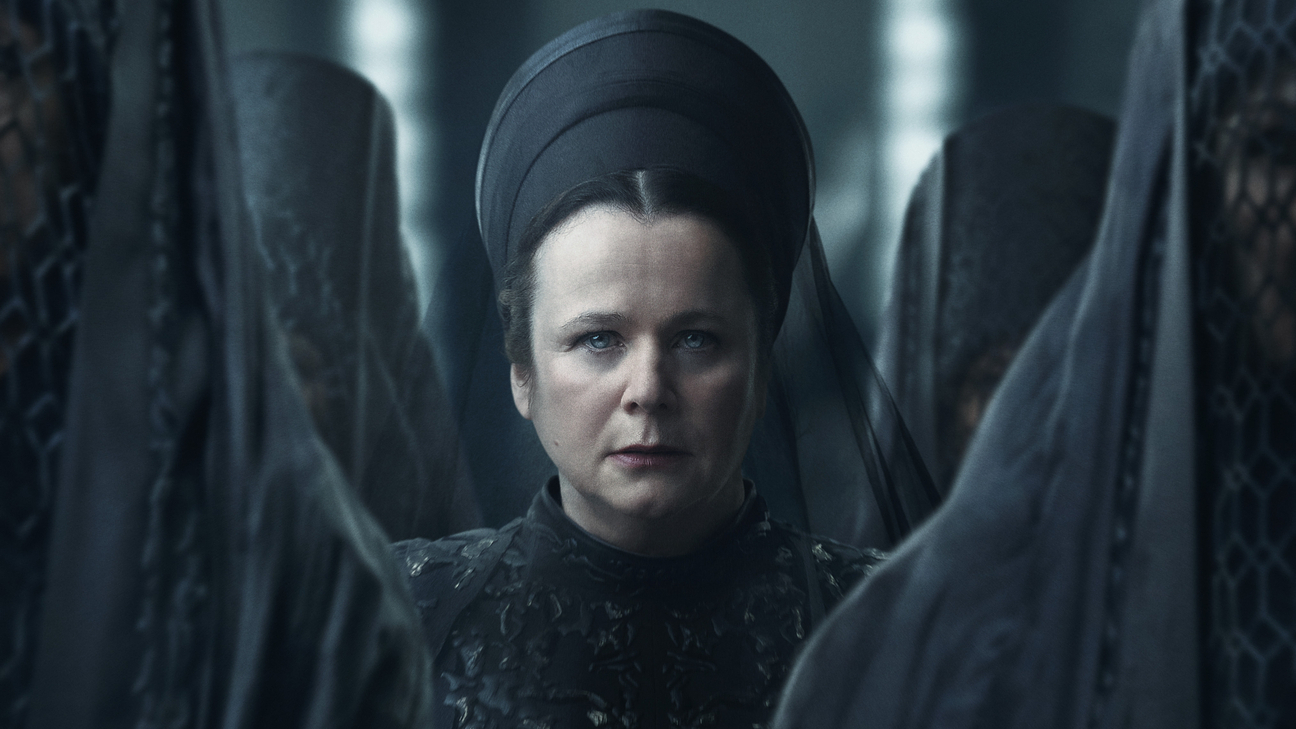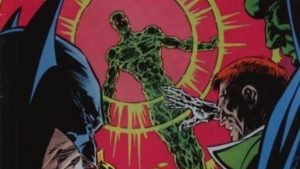
“We’ve never seen a force like this,” says Valya Harkonnen (Emily Watson) in the final trailer for the HBO prequel series Dune: Prophecy.
That comment is delivered amidst images of impressive forces, including the sandworms of Arrakis, the Bene Gesserit witches, and Emperor Javicco Corrino (Mark Strong). But the most striking image might be the most human, that of an arm covered by boiling skin.
Although the trailer doesn’t say for sure, readers of Frank Herbert‘s Dune novels have a good idea of what they’re seeing. That appears to be the effects of a weapon called a stone burner, one of the most destructive in the Dune universe. Stone burners are just one of the many oddly named weapons in the world of Dune. But unlike atomics (atomic bombs) or lasguns (laser guns), stone burners have deeper and more dangerous thematic implications.
In order to understand the weaponry of Dune, we need to keep in mind the series’ expanded timeline. Paul Atreides is born in 10175 AG, with “AG” standing in for “After Guild” on the Universal Standard Calendar. The year 1960 CE in our calendar is 11200 BG (“Before Guild”). So that means that Paul is born 21,311 years in our future.
Obviously, a lot changes in those millennia. But not as much as you’d think, in part because of one of the most important events in the Dune universe: the Butlerian Jihad. From year 201 to 108 BG, humanity fights a war against thinking machines (what they call artificial intelligence in this universe). Among the many consequences of the war is the destruction of all advanced computers, including those used for complex calculations and for space travel.
The Butlerian Jihad leads to the development of several major factions within the world of Dune. Certain humans learn how to do advanced calculations in their minds, becoming human computers called “Mentats,” such as Thufir Hawat (Stephen McKinley Henderson) and Piter de Vries (David Dasmalchain) in Denis Villeneuve’s Dune movies. Navigators use the precognitive abilities granted by spice to chart paths in deep space, making Arrakis—the one planet that produces spice—the most important in the galaxy.
At the same time, Valya Harkonnen and her sister Tula develop a school for girls, which trains them in a religious order called the Bene Gesserit. This, of course, will be the focus of the show Dune: Prophecy, which takes place approximately 10,000 years before the first film.
Even though humans kill the machines, they are still human and wars still happen. They just happen in a different way. Personal shields become common among warriors, which protect the user from fast moving objects but can be pierced by slow moving objects. Personal shields render bullets useless, making swords and daggers the most common weapons in the Imperium. Lasguns are used rarely, as a blast against a personal shield results in a nuclear level blast.
And then there are the actual atomic weapons, the atomics and the stone burners. Atomics are sometimes used, as seen in Dune: Part Two, when Paul launched atomics against the shield wall protecting Baron Harkonnen. But stone burners are almost never used, because they offer more precision.
So unthinkable are stone burners that their first proper appearance, in the novel Dune Messiah (which Villeneuve will bring to theaters as Dune 3), marks the apparent end of a major character. Unlike the widespread destruction of general atomics, stone burners can be controlled and used to launch radioactive j-rays (a type of radiation that, among other things, blind its victims) against specific targets.
With that in mind, the shot of a stone burner’s effects on the human body raises major questions about Dune: Prophecy. As showrunner Alison Schapker told Den of Geek during NYCC, while the series draws inspiration from Sisterhood of Dune and the other books of the Schools Trilogy by authors Brian Herbert and Kevin J. Anderson, books that trace the beginning of the Mentats and Navigators after the Butlerian Jihad, the show also blazes its own path. The series is set 60 years after Sisterhood of Dune, which means that it moves into heretofore unseen territory.
While the specific use of stone burners in Dune: Prophecy is still unclear, readers of Dune Messiah have seen what these weapons can do, an image forever burned into their eyes.
Dune: Prophecy comes to HBO and Max on November 17, 2024.
The post Dune: Prophecy Just Teased the Most Powerful Weapon in the Frank Herbert Universe appeared first on Den of Geek.






